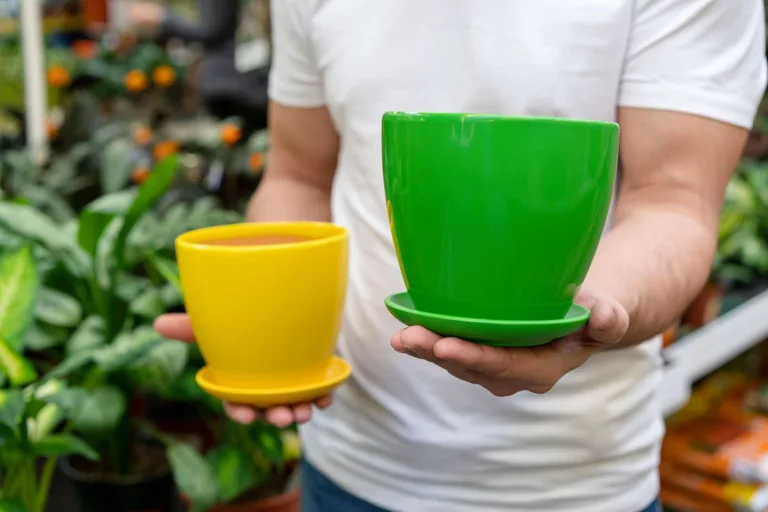Home » Garden » Container Gardening » Container Gardening: Choosing the Right Plant Container Sizes

Gardening is not just a hobby; it's an art, a science, and a labor of love. Whether you're an experienced gardener or just starting, one crucial factor often overlooked is the size of plant containers. Choosing the right size can significantly impact the health and growth of your plants. In this comprehensive guide, we'll delve into the world of plant container sizes, offering insights and a handy chart to help you make the best choices for your garden.
Container gardening has gained popularity for its versatility, allowing you to cultivate plants in various environments, from small balconies to spacious yards. However, the size of the container plays a critical role in your plant's overall well-being. Here's why it matters:
1. Root Growth: The container's size directly affects the root system's growth. Inadequate space can lead to root-bound plants, restricting their ability to absorb nutrients and water.
2. Moisture Retention: Larger containers retain moisture for a more extended period, reducing the frequency of watering. Smaller containers dry out faster, demanding more attention.
3. Plant Stability: Taller or top-heavy plants require larger containers to prevent toppling. Stability ensures your plants thrive even during adverse weather conditions.
4. Nutrient Availability: A spacious container allows for a more extensive soil volume, offering a greater reservoir of nutrients for your plants.
5. Plant Variety: Different plant species have varying space requirements. Matching the container size to your plant's needs promotes healthy growth.
To help you make informed decisions, here's a comprehensive container size chart for various types of plants:
| Plant Type | Container Size (Diameter and Depth) | Examples |
|---|---|---|
| Herbs and Small Vegetables | 6-12 inches | Basil, mint, chives, radishes, small lettuce varieties |
| Compact Flowers and Dwarf Varieties | 12-18 inches | Marigolds, petunias, dwarf sunflowers, pansies |
| Medium-Sized Vegetables and Perennials | 18-24 inches | Tomatoes (determinate varieties), peppers, strawberries, coreopsis |
| Tall or Top-Heavy Plants | 24-30 inches | Indeterminate tomatoes, eggplants, dahlias, tall sunflowers |
| Trees and Large Shrubs | 30+ inches | Citrus trees, dwarf fruit trees, large hydrangea varieties |
Use this table as a reference when selecting the right container size for your specific plants in your gardening endeavors.
Drainage is Key: Ensure your containers have proper drainage holes to prevent waterlogged soil, which can lead to root rot.
Quality Soil: Use high-quality potting mix with good aeration and moisture retention properties.
Regular Monitoring: Keep an eye on your plants and adjust container size as they grow. Repot if necessary.
Group Compatible Plants: When combining different plants in a container, ensure they have similar water and sunlight requirements.
Fertilize Appropriately: Container plants may need more frequent feeding since nutrients can leach out with watering.
Protect from Extreme Conditions: Move containers to sheltered areas during extreme weather conditions to prevent damage.
Choosing the right plant container size is a fundamental aspect of successful gardening. By understanding the needs of your plants and referencing our comprehensive chart, you can optimize your gardening efforts. Remember that container gardening offers flexibility, allowing you to adapt and experiment as you nurture your green oasis. With the right container sizes and a bit of care, your garden will flourish, providing you with beauty, nourishment, and endless satisfaction. Happy gardening!
Disclaimer: This article contains sponsored ads and affiliate links. Research and make informed decisions before engaging with advertised products/services.
©2023. Homereviewsclub. All Rights Reserved.